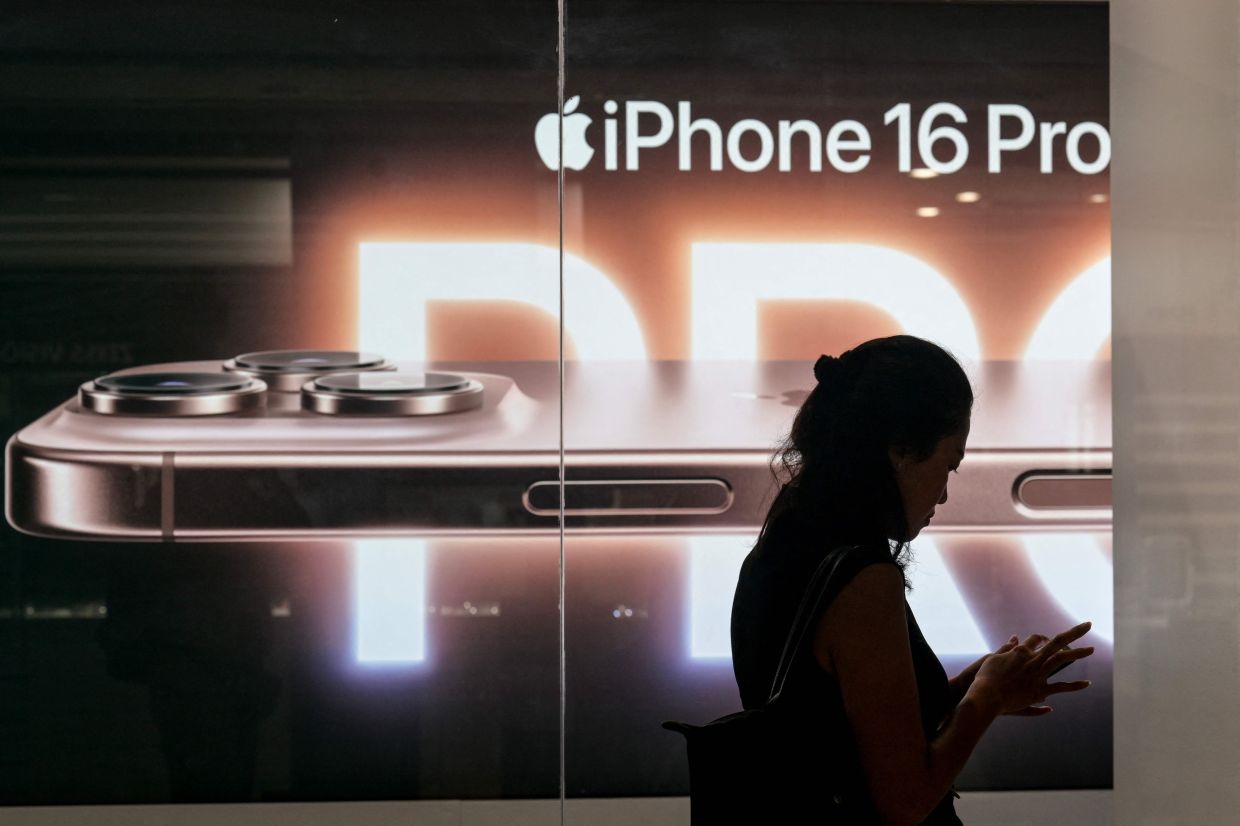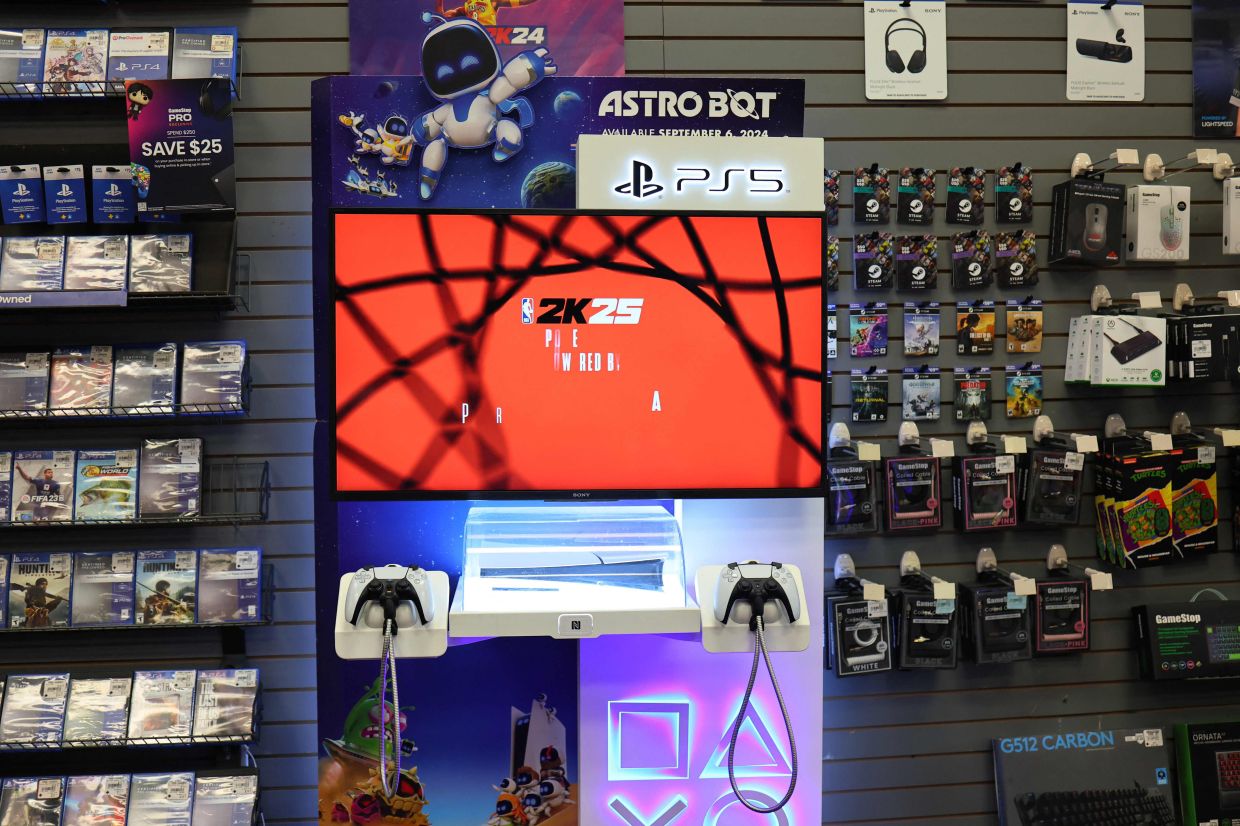
A Waymo autonomous self-driving Jaguar electric vehicle sits parked at an EVgo charging station in Los Angeles, California, on May 15, 2024. Waymo became the latest company to come under the microscope on May 14, when NHTSA announced a probe of its automated-driving system, citing 22 incidents in which vehicles ‘exhibited unexpected behaviour’. — AFP
Companies offering driver–assistance systems and developing autonomous vehicles are entering a new phase of more exacting oversight, with the top US auto–safety regulator investigating four of the industry’s most prominent companies in rapid–fire fashion.
The National Highway Traffic Safety Administration initiated two probes just this week into Waymo and Zoox, the driverless technology subsidiaries of Alphabet Inc and Amazon.com Inc. While the circumstances are different for Tesla Inc and Ford Motor Co – their vehicles offer driver-support systems that require constant supervision – what the companies share in common are car crashes that drew the attention of an agency tasked with rooting out safety defects.
The investigations point to a more hands-on approach by a regulator that’s been relatively forbearing of automated-driving systems until recently. While executives and bureaucrats alike have touted the technology’s potential to make roadways safer, NHTSA has steadily accumulated information on how the systems are actually faring on streets and highways. It’s now setting a high bar – in Zoox’s case, for example, the agency initiated a defect probe after just two crashes resulted in minor injuries.
“What’s changing is the understanding on the ground of what’s happening, in terms of the performance of these vehicles, and the willingness to act,” said Bryant Walker Smith, a University of South Carolina law professor who contributed to the driving-automation classification system that NHTSA and the broader industry uses. “We just know more now.”
Waymo became the latest company to come under the microscope on May 14, when NHTSA announced a probe of its automated-driving system, citing 22 incidents in which vehicles “exhibited unexpected behaviour”.
The agency pointed to reports of Waymo vehicles crashing into gates, chains and parked cars, and potentially violating traffic laws. In some cases, the company’s cars drove in opposing lanes with oncoming traffic nearby, or entered construction zones.
A day earlier, NHTSA disclosed a probe of Zoox after two of its sport utility vehicles operating in autonomous mode suddenly braked and were rear-ended by motorcyclists.
The agency said it would evaluate how Zoox’s system behaves in crosswalks and in other similar scenarios where rear-end collisions can happen.
Ford similarly came under investigation after NHTSA received notice of two crashes, though the incidents resulted in three fatalities. In both instances, Mustang Mach-E electric SUVs collided with stationary vehicles at night on controlled-access highways. The manufacturer alerted the agency under a standing order issued in 2021, which requires carmakers to report when vehicles with automated-driving systems activated have crashed.
Tesla has reported the vast majority of crashes under the order, which has contributed to ever-escalating scrutiny of its driver-assistance system called Autopilot. On April 25, the agency opened a probe into whether the EV maker’s recall of more than two million cars months earlier adequately addressed safety risks that NHTSA identified in the course of a years-long investigation.
The carmaker led by Elon Musk agreed to the recall after the agency determined that Autopilot didn’t sufficiently ensure drivers stayed engaged in the task of driving, and that Autopilot invited drivers to be overconfident in the system’s capabilities. Those factors led to foreseeable misuse and avoidable crashes, at least 13 of which involved one or more fatalities, NHTSA said in a filing.
Mark Rosekind, who led NHTSA during the Obama administration, said the agency’s review “shows they are not just taking the recall at face value, but looking for data to show it is effective”.
Information gleaned so far suggests it hasn’t been, Rosekind said in an interview. In announcing its recall query, NHTSA cited 20 crashes involving Tesla vehicles that had received over-the-air software updates aimed at plugging Autopilot’s safety gaps.
Philip Koopman, a professor of computer engineering at Carnegie Mellon University and co-founder of autonomous vehicle consultancy Edge Case Research, said it’s “plausible” that NHTSA could conclude Autopilot can’t be operated safely in some or all of Tesla’s cars, and will need to be deactivated without an effective fix.
Tesla has taken heat for years from safety advocates over how it monitors whether drivers are paying attention while using Autopilot. Critics have pointed to how rivals including General Motors and Ford have employed infrared cameras and eye-tracking software seen as more robust than Tesla’s approach, which for a time was to only monitor whether torque was being applied to the steering wheel.
In summarising its defect investigation, NHTSA called Tesla’s driver-engagement system “weak” and “not appropriate for Autopilot’s permissive operating capabilities”. The company intended for its interior cameras to monitor multiple occupants of vehicles Musk believed would eventually become robotaxis, so they’re positioned above the rear-view mirror. A more ideal placement to specifically track drivers would be behind the steering wheel.
As NHTSA conducts its latest Autopilot probe, one key question is whether Tesla will need to make more costly hardware fixes to its cars to address the agency’s concerns.
“Tesla dug this hole themselves,” Koopman said, “and now they have to deal with it.” – Bloomberg










































